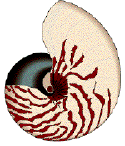

SHORT TERM GOALS:
(1) To enrich student understanding of the Greek and Roman gods and the particular
roles they played in ancient society.
(2) To help students assimilate what they know about the Greek and Roman gods into a
context that illustrates their comprehension of the material.
(3) To foster the creativity and imagination of students through the age-old art of
storytelling.
TIME ALLOTMENT: 5 hours
CONTENT AREAS ADDRESSED:
(1) Language Arts
(2) Social Studies
(3) Computer usage
CONCEPTS ADDRESSED:
(1) Greek and Roman mythology
(2) Research methods
(3) The writing process (i.e. rough draft, editing, etc.)
(4) Storytelling
MATERIALS:
(1) Reference materials (i.e. books, Internet) concerning Greek and Roman mythology
(2) Computers with Internet access
(3) "Peer Editing" sheets contained within this unit
PROCEDURE:
(1) Now students have the opportunity to be creative! Using the Greek and Roman gods
and/or the mythological creatures they encountered in The Odyssey, students should
create their own myths that deal with their own favorite topics, hobbies, etc. (i.e. the
origins of their favorite sports, a special event in their lives, etc.).
(2) Using The Odyssey as a touchstone, discuss with students the use of symbolism and
metaphor in mythology. As Sullivan and Zimba (1996) note, several "basic
archetypes and related symbols" exist that are particularly inherent in mythology and
epic (p. 47). A sampling of these are:
Archetype Symbol
The Self Treasure
The Masculine King
The Adversary Monster
The Feminine Queen/Princess
The Hero/Heroine Youth
The Journey Winding Road
Death/Rebirth Clock
Students should be conscious of some of these archetypes and symbols and attempt to
integrate them into their own myths.
(3) Before beginning this project, students may want to revisit certain books or Internet
sites that contain information that might be helpful to them. Selected titles of books
can be found in the "Reference List" at the end of this lesson plan. Some Internet
sites that may be useful are as follows:
http://www.pantheon.org
(3) Once students have refreshed their memories and completed the research necessary to
write their own myths, they may begin to compose their stories.
(4) After each student has written a myth, the editing process may begin. Once the peer
editing process and sheet are explained, each student should exchange stories with
another person and, along with the "Peer Editing" sheet, help his or her partner to
revise and to strengthen his or her myth.
(5) Taking the advice of their partners, students should revise the rough draft of their
myths and pay particular attention to areas that their peers thought needed more
work.
(6) Upon finishing their revisions, students should submit to their teacher a copy of their
rough draft, their "Peer Editing" sheet, and their final draft. If students so desire,
they may briefly present their myths to the class.
ASSESSMENT:
(1) Group Participation Rubric
(2) Writing Rubric
EXTENSIONS:
(1) In groups of two or three, students could develop a skit that incorporates
mythological gods, creatures, and symbols in order to reenact a mutual experience
they shared.
(2) With a tremendous amount of organization, an entire pod could write a myth that
glorifies the identity of the pod and pays particular attention to the important elements
each student and teacher brings to the team.
(3) Drawing on various artistic abilities, students could draw a picture, write a
song/poem, or make a collage that represents or tells the story or their personal myth.
REFERENCE LIST:
The archetypes and symbols found in Procedure #2 are found in:
Sullivan, D., & Zimba, P. (1996). Get into the act. Parsippany: Good Apple. [ISBN: 1-56417-828-5]
Books students may want to consult:
Asimov, I. (1961). Words from the myths. New York: New American Library. [ISBN: 0-451-14097-4]
Bulfinch, T. (1959). Bulfinch's mythology. New York: Laurel. [ISBN: 0-440-30845-3]
Gibson, M. (1991). Gods, men & monsters from the greek myths. New York: Peter Bedrick Books. [ISBN: 0-87226-911-6]
Hamilton, E. (1940). Mythology. New York: New American Library. [ISBN unavailable]
Go to:
Cultural Research on the Points of the Bermuda Triangle lesson